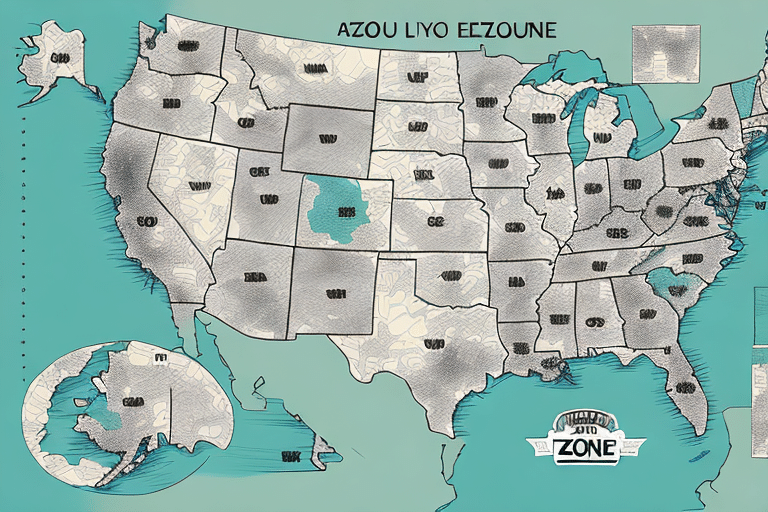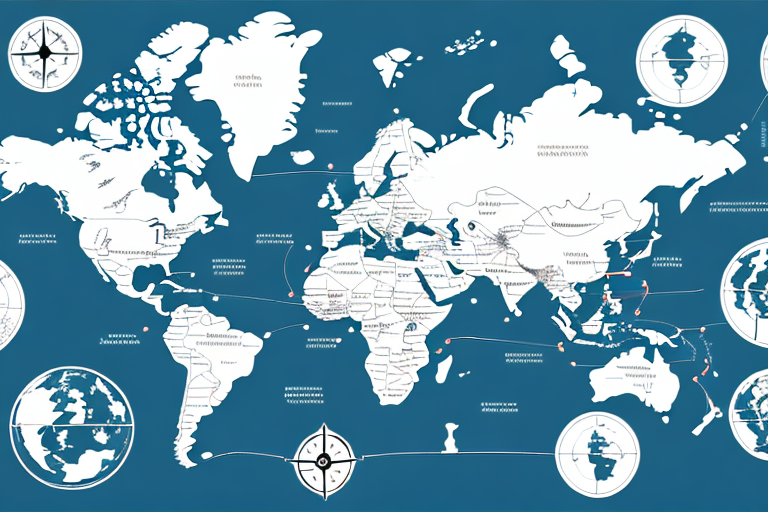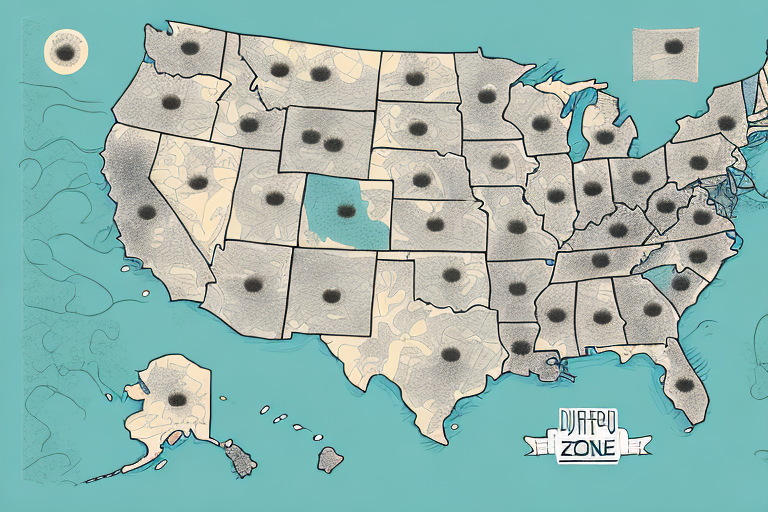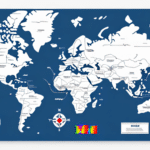Introduction to the UPS Domestic Zone Chart
UPS is one of the most trusted shipping carriers in the United States, renowned for its efficient delivery methods and reliable service. Whether you're a business or an individual, understanding the intricacies of shipping costs can be challenging, especially when dealing with multiple destinations nationwide. This is where the UPS Domestic Zone Chart becomes an invaluable tool, enabling you to accurately determine shipping costs across various destinations with ease.
What is the UPS Domestic Zone Chart?
The UPS Domestic Zone Chart is a comprehensive guide that categorizes U.S. destinations into different shipping zones based on zip codes. These zones play a crucial role in determining the cost of shipping, factoring in the distance between the origin and destination, as well as the package's weight and dimensions. By utilizing this chart, businesses can make informed decisions about their shipping strategies, ensuring they offer the most affordable and reliable shipping options to their customers.
Additionally, the UPS Domestic Zone Chart allows for easy comparison of shipping costs with other carriers like FedEx and USPS. This comparison helps businesses choose the most cost-effective shipping solutions tailored to their specific needs.
How the UPS Domestic Zone Chart Works
Understanding the functionality of the UPS Domestic Zone Chart is essential for optimizing shipping costs. The chart assigns each U.S. zip code to a specific zone, numbered typically from Zone 2 to Zone 8, based on their geographic distance from the shipping origin. The zone number directly influences the shipping rate—the higher the zone, the greater the distance and the higher the cost.
When calculating shipping costs, UPS considers several factors including:
- Package Weight: Heavier packages incur higher shipping fees.
- Package Dimensions: Larger packages may be subject to additional charges.
- Service Type: Different services (e.g., ground, air) have varying costs and delivery times.
It's important to regularly consult the UPS Domestic Zone Chart as it is periodically updated to include new zip codes and adjust zone classifications based on changing logistics.
Benefits of Using the UPS Domestic Zone Chart
Utilizing the UPS Domestic Zone Chart offers numerous advantages for businesses:
- Cost Efficiency: Accurately determine shipping costs to avoid overcharging or undercharging customers.
- Improved Shipping Strategy: Identify the most cost-effective routes and shipping methods.
- Enhanced Customer Satisfaction: Provide reliable and transparent shipping options, building trust with customers.
- Competitive Advantage: Compare shipping costs with other carriers to offer the best rates in the market.
Common Mistakes and How to Avoid Them
Even with a valuable tool like the UPS Domestic Zone Chart, businesses can make errors that impact shipping costs:
- Outdated Information: Failing to regularly update the zone chart can lead to inaccurate shipping rates. Always ensure you are using the latest version.
- Ignoring Package Dimensions: Overlooking the size of the package can result in unexpected fees. Always measure and record package dimensions accurately.
- Incorrect Zone Assignment: Misclassifying the destination zip code can lead to incorrect shipping costs. Double-check zone assignments for each shipment.
- Overlooking Service Types: Not considering different UPS service options may result in higher costs. Evaluate various services to find the most economical choice.
How to Read the UPS Domestic Zone Chart
Effectively reading the UPS Domestic Zone Chart is crucial for accurate cost calculation:
- Locate the Origin Zip Code: Find your shipping origin zip code in the left-hand column of the chart.
- Find the Destination Zip Code: Identify the recipient's zip code in the top row of the chart.
- Determine the Zone: The intersection of the origin and destination zip codes will indicate the specific zone number.
- Calculate Shipping Costs: Use the zone number along with package weight and dimensions to determine the shipping rate.
By following these steps, businesses can streamline their shipping process and ensure accurate billing.
Optimizing Shipping Costs with the UPS Domestic Zone Chart
To maximize savings and efficiency, consider the following strategies:
- Regular Updates: Keep the UPS Domestic Zone Chart updated to reflect the latest zip code changes and zone adjustments.
- Compare Shipping Options: Evaluate different UPS services (e.g., Ground, 2nd Day Air) to find the most cost-effective solution.
- Package Consolidation: Combine multiple shipments into a single package when possible to reduce costs.
- Leverage Bulk Shipping: Take advantage of bulk shipping discounts by planning shipments in larger quantities.
Comparing the UPS Domestic Zone Chart with Other Shipping Options
While UPS offers a robust domestic shipping framework, it's beneficial to compare it with other carriers:
- FedEx: Similar to UPS, FedEx provides zone-based pricing but may offer different rates and services.
- USPS: The United States Postal Service often provides more economical options for lighter packages.
- DHL: While primarily known for international shipping, DHL also offers domestic services with competitive rates.
By analyzing the UPS Domestic Zone Chart alongside other carriers' pricing structures, businesses can select the best shipping partners to meet their needs and budget.
Real-life Case Studies Using the UPS Domestic Zone Chart
Many businesses have successfully optimized their shipping strategies using the UPS Domestic Zone Chart:
- E-commerce Retailer: An online store identified that rerouting shipments from Zone 8 to Zone 7 saved them approximately 37% on shipping costs annually.
- Wholesale Distributor: By adjusting package weights and utilizing UPS Ground services, a distributor reduced their overall shipping expenses by 15%.
- Subscription Service: A subscription box company optimized their delivery routes using the zone chart, enhancing delivery times and reducing costs by 20%.
Best Practices for Incorporating the UPS Domestic Zone Chart into Your Shipping Strategy
To effectively utilize the UPS Domestic Zone Chart, consider the following best practices:
- Consistent Monitoring: Regularly review and update shipping zones to ensure accuracy.
- Staff Training: Educate your team on how to read and apply the zone chart correctly to prevent errors.
- Integrate with Shipping Software: Use shipping management tools that incorporate the zone chart for automated and accurate rate calculations.
- Customer Communication: Clearly communicate shipping options and costs to customers to enhance transparency and trust.
Future Updates and Advancements for the UPS Domestic Zone Chart
UPS continuously improves its shipping framework to adapt to market changes and technological advancements:
- Incorporation of Big Data: Utilizing big data analytics to predict shipping patterns and optimize zone classifications.
- Technology Integration: Enhancing the zone chart with interactive digital tools and integrations with e-commerce platforms.
- Environmental Considerations: Adjusting zones and shipping methods to promote eco-friendly practices and reduce carbon footprints.
Staying informed about these updates ensures that businesses can leverage the latest tools and strategies for efficient shipping.
Frequently Asked Questions about the UPS Domestic Zone Chart
- Q: How often is the Domestic Zone Chart updated?
- A: The chart is typically updated three times a year to reflect changes in zip code ranges and logistical adjustments.
- Q: Can the Domestic Zone Chart be used for international shipping?
- A: No, the Domestic Zone Chart is specifically designed for shipments within the United States.
- Q: Does the chart include shipping speeds?
- A: Yes, the chart provides estimated delivery times for various services, helping businesses choose the right shipping speed for their needs.
Trusted Resources for Learning More About the UPS Domestic Zone Chart
For further information and detailed guidance on the UPS Domestic Zone Chart, consider the following resources:
- UPS Official Shipping Support - Provides comprehensive information on shipping options and zone chart utilization.
- UPS Shipping Advice - Offers expert tips and best practices for efficient shipping.
- UPS Business Solutions - Tailored solutions and tools for businesses to optimize their shipping strategies.
By leveraging these resources, businesses can enhance their understanding and effective use of the UPS Domestic Zone Chart, leading to more streamlined and cost-effective shipping operations.






















